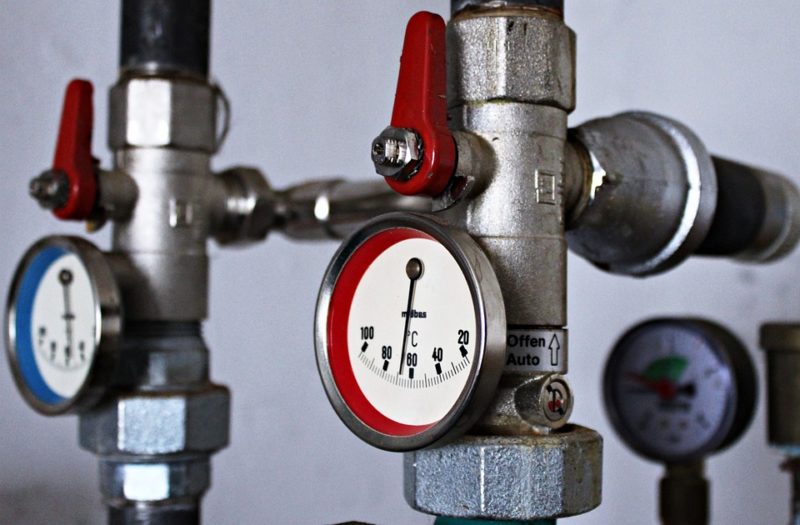Are you wondering how to remove calcium buildup in water heater? Just use lye and vinegar when you want to remove calcium deposits. Allow the substances to rest in the reservoir for hours before washing them and using them.
You will know if calcium builds up entirely in the heater through the strange loud thumps that emanate from the heater. This particular buildup is a solid iron deposit forming on the water heater’s source and other parts because of hard water.
Remove the sediments and the calcium to maintain the smooth functioning of the heater. The hotter the water heater is if a considerable quantity of calcium water stays behind. It should not be set high but only at around 125 to 145 degrees Fahrenheit. This is just an overview, so you better read further!
Steps To Remove Calcium Buildup In Water Heater
Below are the steps to best remove calcium buildup in the water heater.
Step #1. Examining the water heater
Inspect the device if it silts or if calcium forms. Then, shut the machine off and the supply of excellent water. Get the water line connected to a drain faucet. Preserve the rest of the hose but at a distance in a drain faucet. This way, the heat will escape securely. Inspect for significant or minor whitish specks as you open the drain faucet. Observe as you see the calcium that accumulates. Remove the input line in the cold water above the heater for the air to get into the water tank. Shut its drain after you empty the reservoir.
Step #2. Using other acids and vinegar
Place a bottle filled with vinegar, acidic tub, chemical lime cleanser, and tile cleaning solution into a cooling input single cup. Then, stop it after each cup. Avoid gas to develop as you stop the drinks. Get the unit emptied after several hours. Clean to eliminate most of the sediments. Use some Ziploc baggie that ties snugly through an ice water input line. Then, observe if the cleaning is still working. Wait some more to see if the balloon is expanding. It is because the cleaner still works on those residues. Wait for six hours until the vinegar solution decomposes and eliminates the sediments onto the hot water system interior. See to it that anyone knows the water heater is out of service for a week before starting it.
Step #3. Draining the water
Attach the inlet line for cooking to clean the water heater. Please switch it on and release the intake faucet in cold water. After that, activate the heated water tap next to the heating element that refills the device. Shut off the drainage after. Allow the drains and the machine to wash after noticing the water pours out of a valve. Ensure clean water as you close the drain. Plus, no bubbles should come around. Switch on the warm water tap to eliminate the air in a heater. Then, start the heater again and drain it after.
Drawbacks Of Calcium Buildup In Water Heater
One main drawback of a calcium deposit in a heated water heater is building an insulation layer in the gas burner and the liquid. The slit that slowly exchanges heat is the base of the tank overheating. Warming causes the steel to weaken and the crystal cover to shatter. The tank’s life expectancy is shortened, as this then covers the underneath component and causes it to go down.
Plus, it reduces the ability of the reservoir to maintain sufficient energy to develop toxic anaerobic processes. The sediment reaches the circulation pipes and clogs up the open check valves. Plus, it causes burnout in the electrical motor. Calcium deposits jam the discharge valve and stop water as it goes and pushes the container, and makes more noise; this is somehow bothersome on some occasions.
Why Remove Calcium Buildup In Water Heater?
Water costs can escalate due to sediments and calcium buildup. That is also with the water heater not performing well. The deposits underneath the components or vessel stop the heat conduction in hot water. The result is a higher hot water cost and a prolonged time of heating water. Clean the water heater after several months and obtain a filtration system. Get it connected to the water system, thus avoiding buildup.
Ways To Remove Calcium Buildup In Water Heater
Below are more ways how to remove calcium buildup in water heater:
#1. Flushing the water heater
Do this once a year to help eliminate calcium buildup, as this requires turning the device off and enabling the water to drain out.
#2. Using chemical treatments
Flush the tank after more calcium is in the heater. Pour some vinegar into the tank of hot water. Afterward, allow it to stay there for several hours. Flush the tank thoroughly, removing the calcium and the vinegar. Excess calcium buildup may not be the issue if these two do not work. Or the problem may not relate to calcium deposits. You may also want to read about sizing new water heater.
It’s A Wrap!
Now you learn the best ways how to remove calcium buildup in water heater. It’s also up to you to flush it and use chemical substances. But if these two methods don’t work well, look for other issues in this case. It is essential to learn to remove calcium buildup to avoid the problems from exacerbating more. You may want to read related articles; know how long to drain water heater and how to tell if water heater is gas or electric.

